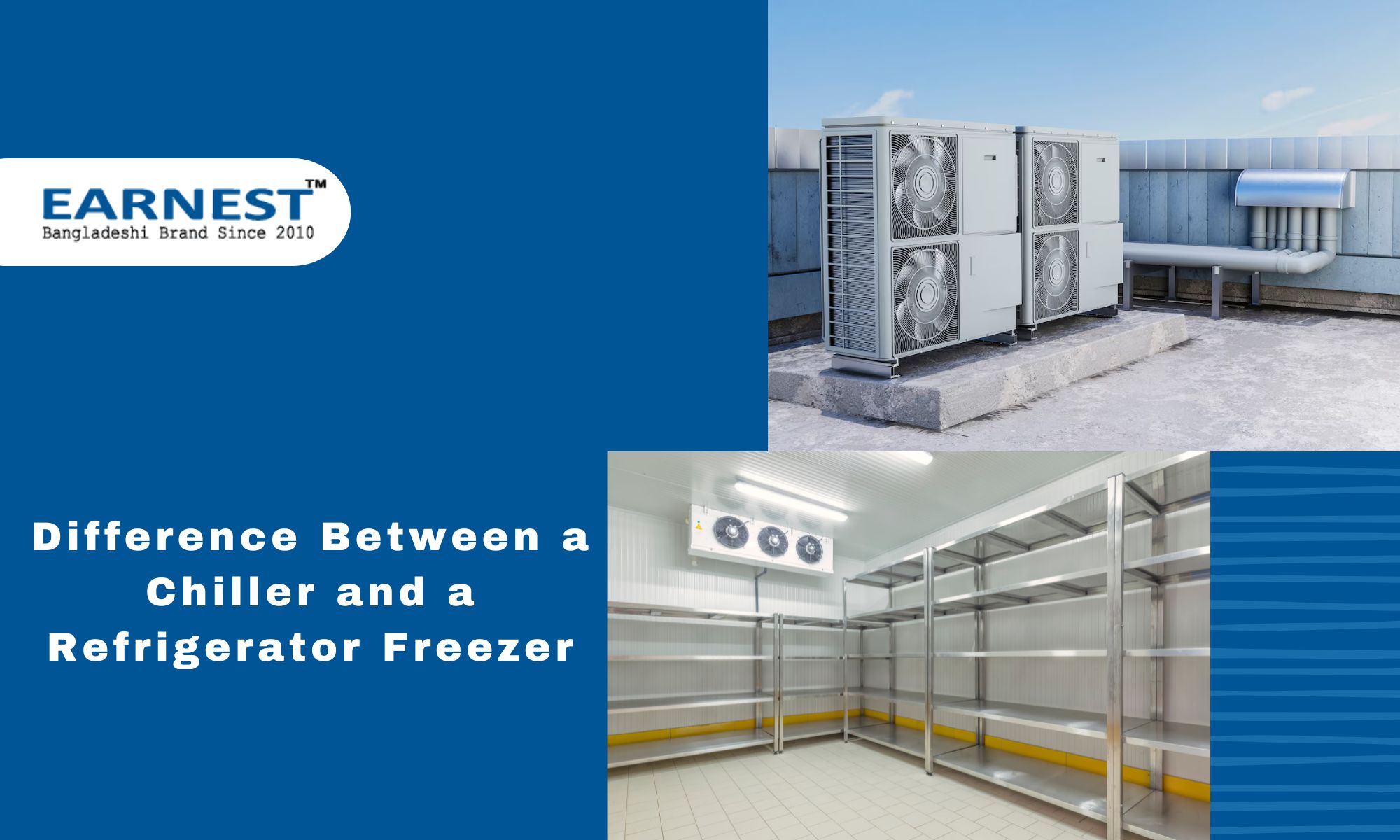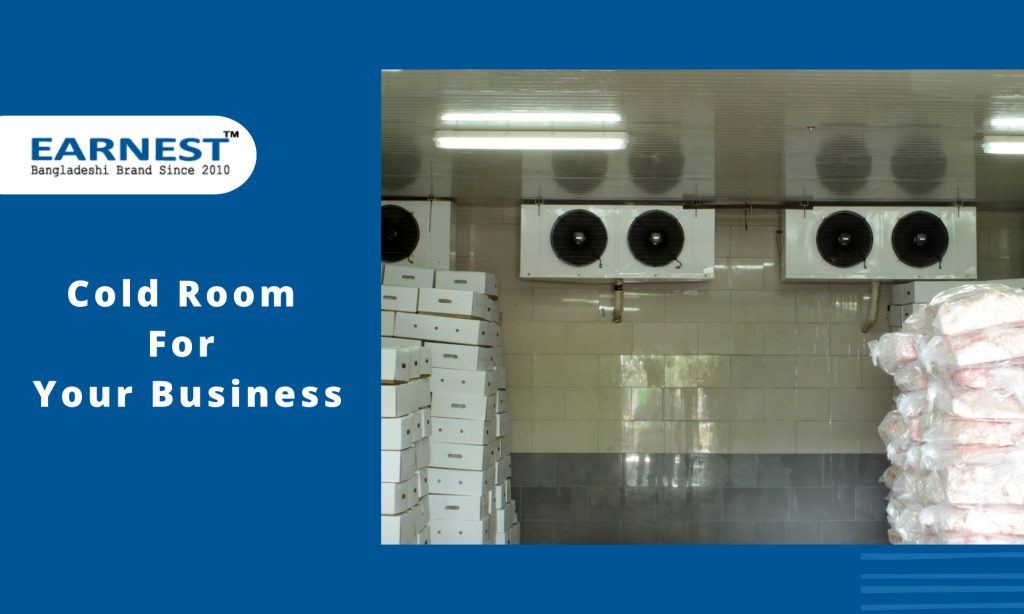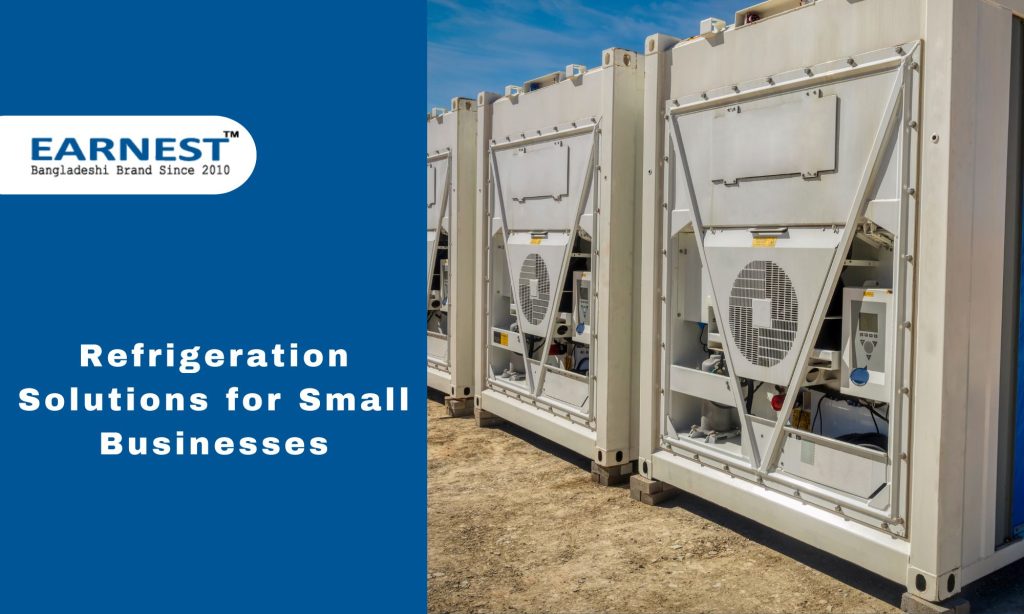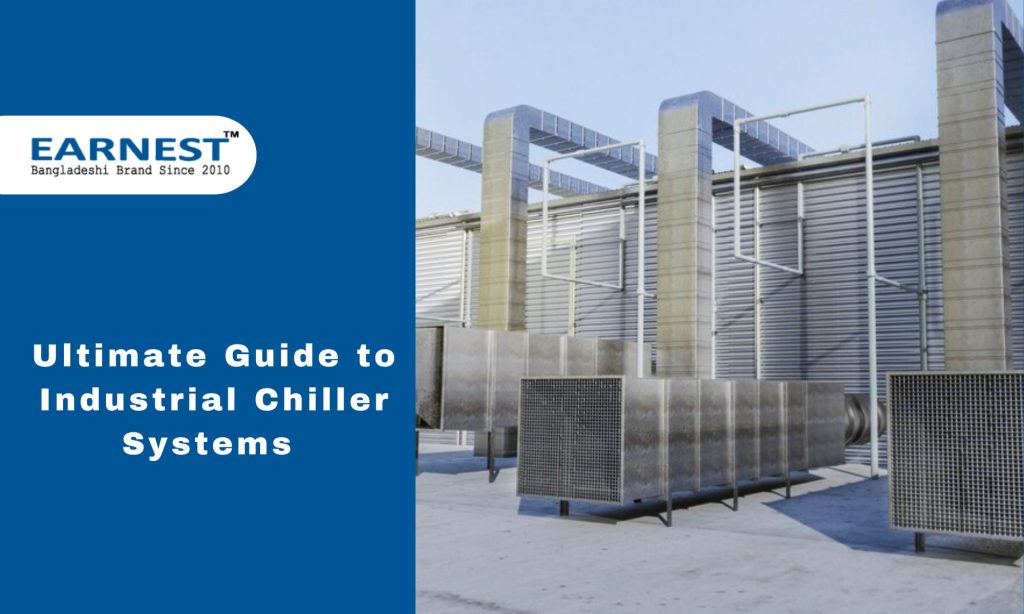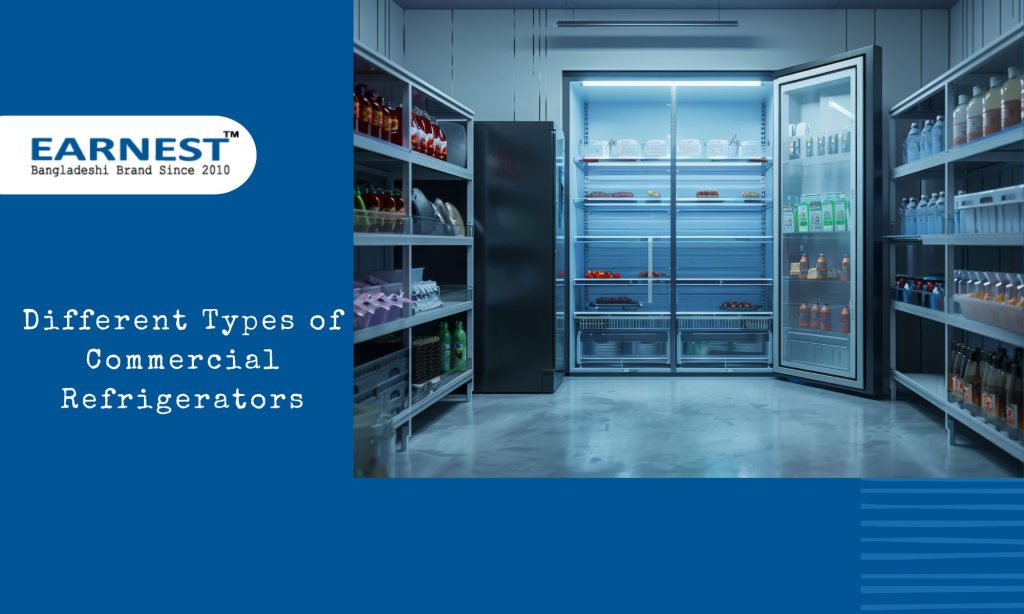Regarding cooling technologies, chillers, and refrigerator freezers are two distinct types of machines designed for similar purposes. Understanding their differences is crucial, especially if you are involved in industries that require precise temperature control, such as food storage, manufacturing, or HVAC systems.
At one end of the spectrum, we have large-sized chillers that ensure factories and industries are kept safe and cool. On the other end, we have the smaller refrigerators that ensure homes and offices can keep their goods and food items consumable.
With varying types, specifications, needs, and uses, both are important in their places.
In this post, we will decode seven key differences between chillers and refrigerator freezers.
Understanding the Two
Chiller:
A chiller is a cooling device used in industrial and commercial applications to remove heat from a liquid, which is then used to cool air, equipment, or processes. Chillers are integral in HVAC systems for large buildings and industrial processes where precise temperature control is critical.
The increasing demand for process cooling in manufacturing, food and beverage, and medical sectors drives the need for industrial chillers.
Refrigerator Freezer:
A refrigerator freezer is a household appliance that stores and preserves food at low temperatures. The refrigerator compartment maintains temperatures slightly above freezing, ideal for fresh food storage, while the freezer compartment keeps food at sub-zero temperatures to prevent spoilage.
Design and Construction
Chillers are robust systems designed for large-scale operations. They consist of several key components:
Compressor: The heart of the chiller, which is responsible for compressing the refrigerant gas and facilitating heat exchange.
Condenser: Where the refrigerant releases absorbed heat.
Evaporator: Where the refrigerant absorbs heat from the liquid to be cooled.
Expansion Valve: Controls the flow of refrigerant into the evaporator.
Chillers can be classified into two main types:
Air-Cooled Chillers:
This type of chiller utilizes ambient air to dissipate heat. These chillers are more compact and easier to install but are less efficient than water-cooled chillers. They are suitable for environments where water is scarce or in smaller installations.
For example, a typical 500-ton air-cooled chiller might consume around 0.7 kW/ton.
Water-Cooled Chillers:
These chillers use water from a cooling tower to dissipate heat. They are more energy-efficient and suitable for larger installations, although they require more maintenance. These chillers can consume as low as 0.5 kW/ton, making them more efficient than their air-cooled counterparts.
In contrast, refrigerator freezers are designed for domestic use, prioritizing compactness, energy efficiency, and ease of use.
Key components of the freezers include:
Compressor: Similar to chillers, it compresses the refrigerant gas.
Evaporator Coils: Absorb heat from the interior of the appliance.
Condenser Coils: Release heat absorbed from the interior to the outside.
Thermostat: Regulates the internal temperature.
Modern refrigerator-freezers are built with user-friendly features such as adjustable shelves, temperature controls, and sometimes smart technology that allows remote monitoring and control.
The average energy consumption for a standard refrigerator freezer ranges from 100 to 800 kWh per year, depending on size and features.
What is Their Cooling Mechanism?
Chillers operate using either a vapor-compression or absorption refrigeration cycle.
In the Vapor-Compression Cycle, which is the most common type, a refrigerant is compressed, condensed, expanded, and evaporated to absorb and release heat. This cycle is continuous, maintaining a steady flow of cool liquid to the system it serves.
On the other hand, absorption Chillers use a heat source to drive the refrigeration cycle instead of mechanical compression. They are often used in situations where waste heat is available, such as in cogeneration plants.
The efficiency of a chiller is often measured in terms of Coefficient of Performance (COP), which is the ratio of cooling provided to the energy consumed. Modern chillers can achieve COPs of 6.0 or higher, meaning they are quite efficient, especially when paired with energy recovery systems.
The refrigerator freezer uses a simpler version of the vapor-compression cycle. Here, the refrigerant is compressed into a high-pressure gas and then condensed into a liquid as it releases heat outside the unit.
The liquid refrigerant is expanded, causing it to evaporate in the evaporator coils, where it absorbs heat from the refrigerator or freezer compartment, thus lowering the temperature inside.
The cycle repeats continuously to maintain the desired temperature.
This system is effective for small, closed environments like a refrigerator. Energy efficiency in refrigerator freezers has improved significantly with advancements in insulation and compressor technologies, with many units now consuming less than 500 kWh annually.
Commercial Applications
Chillers are versatile and used across various industries.
For instance, they can be used in industrial manufacturing processes such as plastic injection molding, metalworking, and chemical processing, where precise temperature control is essential to product quality.
They are more popularly used in HVAC Systems where they are key components in large-scale air conditioning systems, particularly in skyscrapers, hotels, and hospitals.
These can be used in Medical and Pharmaceutical Cooling. Here, the chillers are used for cooling medical equipment, maintaining laboratory environments, and preserving biological samples.
Globally, the industrial chiller market is expected to reach $10.84 billion by 2028, driven by increased demand for these applications. With the success of businesses like Earnest, industrial chillers are gaining nationwide success in Bangladesh, too.
But when it comes to Refrigerator freezers, they are prevalent in our daily lives, with applications including:
Household Food Storage: Essential for preserving perishable foods and reducing food waste.
Commercial Kitchens: In restaurants and cafes for storing ingredients and prepared meals.
Retail Environments: In supermarkets and grocery stores store products before sale.
Pharmaceutical Storage: For small-scale storage of vaccines and other temperature-sensitive medications.
Hospitality Industry: In hotels and resorts, providing guests with convenience for storing food and beverages.
Temperature Control and Range
Chillers offer a broad range of temperature control capabilities. General HVAC Applications typically maintain temperatures between 4°C and 7°C (39°F to 45°F) for air conditioning.
The Industrial Applications can be adjusted to suit specific needs, with some chillers capable of reaching temperatures as low as -40°C (-40°F) for specialized processes.
Also, Precision Cooling of Chillers used in medical or laboratory settings may require temperature stability within ±0.5°C to ensure accurate and reliable operation.
The ability to finely tune the temperature range makes chillers ideal for environments where precise climate control is necessary.
Refrigerator freezers operate within more defined temperature ranges. Refrigerator Compartment maintains a temperature range of 0°C to 4°C (32°F to 39°F), suitable for fresh food storage. This range is optimal for slowing bacterial growth while keeping food fresh.
Freezer Compartment keeps temperatures at or below -18°C (0°F), which is sufficient to prevent the growth of microorganisms and prolong the shelf life of frozen foods.
Most modern refrigerator freezers allow users to adjust the temperature within a limited range, depending on the type of food stored and personal preferences. Some advanced models also feature separate temperature zones for different types of food, ensuring optimal storage conditions.
Consumption of Energy
At one end, chillers are among the most energy-intensive equipment in industrial settings. Their energy consumption varies significantly depending on the type and size:
Air-cooled chillers usually consume more energy compared to water-cooled chillers. A 500-ton air-cooled chiller can consume around 350 kW under full load conditions.
Water-cooled chillers are more energy-efficient due to the cooling properties of water. They can consume approximately 250 kW of energy under similar conditions. The use of variable speed drives and advanced controls can further reduce energy consumption.
The energy efficiency of chillers is also influenced by the ambient temperature, load conditions, and maintenance practices. Energy-saving technologies, such as heat recovery and free cooling, are increasingly being integrated into chiller systems to reduce their environmental impact.
On the other end, Refrigerator freezers have seen significant improvements in energy efficiency over the past few decades. The introduction of Energy Star-rated appliances has pushed manufacturers to reduce energy consumption.
For instance, modern units consume between 100 to 800 kWh per year, depending on the model and size. Compact models might use as little as 200 kWh annually, while larger side-by-side models can use up to 800 kWh.
Then, you have the Inverter Compressors that are becoming more common in refrigerators, allowing for variable speed operation that adjusts the compressor’s speed based on cooling demand, leading to further energy savings.
With energy efficiency becoming a key purchasing criterion for consumers, manufacturers continue to innovate, incorporating better insulation materials, more efficient compressors, and advanced electronic controls.
Maintenance and Longevity
Maintenance of chillers is critical for ensuring longevity and efficiency. Regular checks on compressors, refrigerant levels, and the integrity of condenser and evaporator coils are essential. This helps in identifying and addressing issues before they lead to costly repairs.
Chillers, especially water-cooled chillers, require regular cleaning to prevent scale buildup in heat exchangers, which can significantly reduce efficiency. Routine maintenance can help extend the life of a chiller to 20 years or more.
Many modern chillers are equipped with advanced monitoring systems that provide real-time data on performance, helping maintenance teams optimize operations and schedule timely interventions.
The cost of maintaining a chiller can be high, particularly for large systems, but this is offset by their critical role in industrial processes and the high cost of downtime.
On the other hand, Refrigerator freezers are designed for ease of maintenance. Their basic maintenance Includes cleaning the condenser coils, checking the door seals, and ensuring that the defrost system is working properly.
Most issues, such as cooling inefficiencies, can often be traced back to simple maintenance oversights.
With proper care, a refrigerator freezer can last between 10 to 20 years. Factors such as usage frequency, maintenance, and the quality of the appliance can influence this lifespan.
Some modern refrigerator freezers come with self-diagnostic features that alert users to issues before they become serious problems, reducing the need for frequent service calls.
Though maintenance requirements for refrigerator-freezers are generally not much, regular upkeep is important to maintain efficiency and extend the appliance’s life.
To Sum Up
Industrial chillers and refrigerator freezers both play vital roles in their industries to help businesses and homes keep goods and items fresh and safe. However, purchasing the right ones and maintaining them for a long time is not always easy. In such cases, you would need the help of experts like Earnest to intervene and help you out.
Also, knowing how much energy these consume and their budgets is critically important. In such cases, you can contact suppliers like Earnest to help you make the right choice
We hope you can differentiate the two now and select the best one for you.

